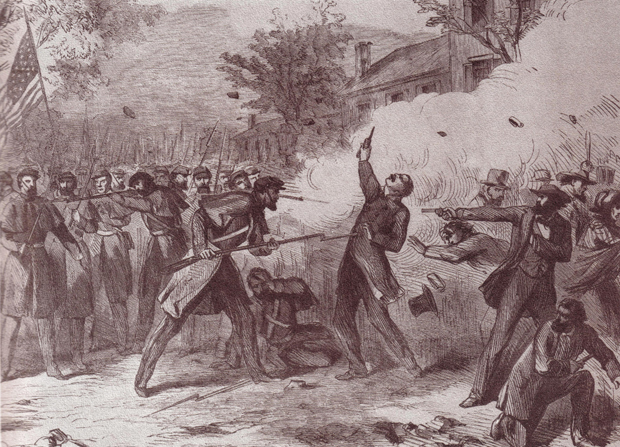In 1870. Marie Meyer is living in Ward
2, subdivision 11 of St Louis. She is working as a seamstress ans
Frank (16) and John (14) are working as store clerks. Louis (6) is
also listed on this census
After the death of Franz Meyer, Marie
Klinger married John Borovicka on June 28, 1873.
John
Borovicka served in the 5th Reg't Infantry, Mo Vols during the Civil
War.
He applied for an invalid
pension on December 23, 1863.
John Borovicka and Marie had
two children:
Edward (1874-19440 and Julia (1876-1909)
Edward (1874-19440 and Julia (1876-1909)
Edward married Alice Gorman.
Alice died in 1931, then he married Coletta Bauer
Julia (1876-1909) married Conrade F. Elrick
Julia (1876-1909) married Conrade F. Elrick
In 1880, they are listed
as:
John Baravouka: 50, born on Bohemia, working as a stone mason
John Baravouka: 50, born on Bohemia, working as a stone mason
Mary Baravoulka: 44, born
on Bohemia
Lewis Baravoulka: 16 (this is
Louis Meyer), working as a shipping clerk
Edward Baravoulka: 6, at school
Julia Baravoulka: 4
John Borovicka died on December
12, 1884. He is buried in Zion Lutheran Cemetery.
After John Borovicka died, Marie Borovicka applied for a Widow's
Pension on January 22, 1890. No information has been found as to why
this cemetery. It is quite a distance from their home in the Soulard
area. He would have been qualified to be buried in the Jefferson
Barracks National Cemetery. The government would have provided a
headstone.
In 1887, 1890, 1893, and 1895
she is listed in the city directory as living at 2416 Elliot Ave.
In 1887, she is living with
Edward Borovicka.
 |
| May 27, 1896 tornado Photo by Strauss Link
In May of 1896, a strong tornado struck St Louis leaving a number of people dead List. It was one of several tornadoes, or cyclones hit the Midwest that Spring. Several people died in the Soulard Market and the damage in the Lafayette Park area was extensive. One article states that every church in the vicinity was damaged. The Compton Hill Congregational opened its doors to any congregation that might need a place to have services until their own church could be repaired.
|
Julia Borovicka (wife of
Conrade F. Elrick) died on October 20, 1909, and was buried in New St
Marcus Cemetery.




































